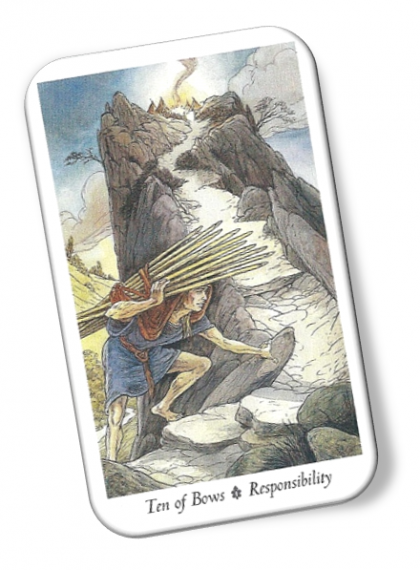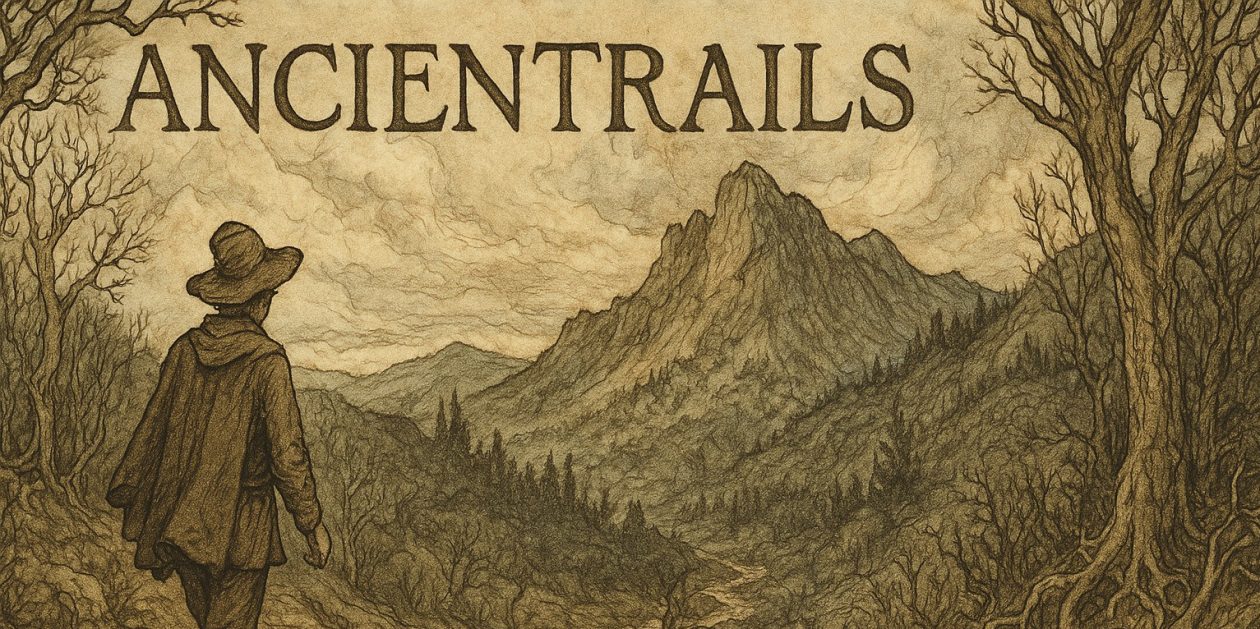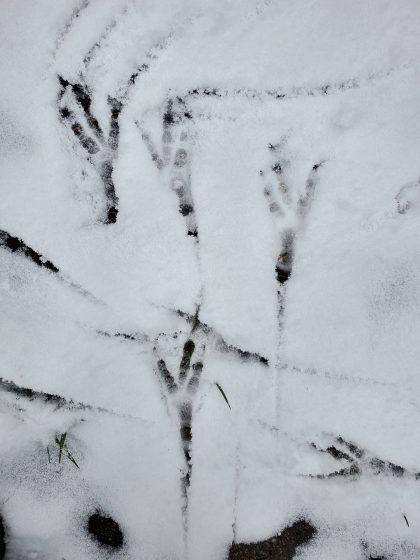Beltane and the Beltane Moon

Friday gratefuls: Tiredness. Long sleep. Denver Mountain Parks. Trail off Brookforest Drive. Mussar. Feelings shared. Luke’s hug. Acting. Felix. Learning lines. Reading. Zweig. Powers. Meisner. Tal. Out of the head, into the heart. Jon. Ruth. Gabe. Diane. These wonderful Mountains. Shadow Mountain. Herme. Kep. Kate, always Kate.
Sparks of Joy and Awe: Denver Parks Mountain Trail
Tarot: Ten of Bows, responsibility
“To tackle the challenges that come with responsibility here requires resilience, endurance, and assertiveness. The burden may be overwhelming and disordered, but the task given to you is aiming for a good, great goal, not only for yourself but also for your family or tribe.” tarotx.net
OK. Second time in two days for the Ten of Bows. Psyche telling me. Pay attention dude. Responsibility. Those bows weighing me down. Keep moving. Be assertive. Yes. Endure. Yes. Be resilient, yes. Figure out a way to hold a relationship without giving in to hurt or immorality. Or, figure out a way to let it go altogether.
More learning of lines. Reading about Meisner. “Renowned American actor and acting teacher Sanford Meisner developed his groundbreaking technique to guide actors in behaving instinctively and getting in touch with their emotions instead of getting trapped in their own thoughts.” NFI “The Meisner Technique is a brick-by-brick process designed to get you out of your head and into your gut.” Meisner Technique Studio.
A great way to move myself beyond the last period of my life and into the new one. Didn’t take the class imagining this reward, but there it is. Thanks Alan and Tal.
Mussar yesterday. A sweet time. These folks have my back. And my front. Getting to know Luke better. Leo, his dog. A sweetheart. Sweet. A word I reuse. Means I often see the world as precious. Most of the time. Life, too.
Acting class on Monday. Kabbalah and the Stars on Tuesday, zoom. Diane on Wednesday zoom. Mussar on Thursday. A lunch or breakfast with Alan or Luke or Rebecca. The Ancient Brothers on Sunday. An occasional service, a visit from the grandkids and Jon every couple of weeks. MVP once a month. That’s plenty for me. I wouldn’t want much less and certainly not much more. The Hermit in a Crowd. Living alone with a crowd.
On the way home from mussar I stopped for the lovely Denver Mountain Park Trail near the bottom of Brook Forest Drive. About 30 minutes. A Stream. Valley walls covered with Ponderosa. Green Grass along the Stream bed. Going in and out of Shadow. Lodgepole. Dogwood. At the end of the trail the reward is Water falling over a graduated step of Rock, the Stream not yet finished wearing them down. The sound, soothing. On a small Pond I saw Water Wtriders. Picked up a Pine Cone that had a new Pine growing from its tip, a chartreuse baby Tree. Overstory on my mind the whole hike.
During an acting exercise aimed at getting us to our feelings Tal said of me in succession: you’re patient. I am patient. You’re kind. I am kind. You’re joyful. I am joyful. That last one. Yes. At last.

 Tuesday gratefuls: Deb. Robbie. Tal. Gretchen. Alan. Terrence. Jill. Nights. Lunar red. The full red Moon. Cloudy skies. Skipping Sefer Yetzirah. Learning things in astrology. Not enough. Reading plays. Loving it. Art is not only sculpture, prints, paintings, metal work. Literature. Theater. Music. Oh. Remembering.
Tuesday gratefuls: Deb. Robbie. Tal. Gretchen. Alan. Terrence. Jill. Nights. Lunar red. The full red Moon. Cloudy skies. Skipping Sefer Yetzirah. Learning things in astrology. Not enough. Reading plays. Loving it. Art is not only sculpture, prints, paintings, metal work. Literature. Theater. Music. Oh. Remembering.


 Acting class. Huh. Enjoyed. In an exercise, How do I feel, I said I feel like a school boy on the first day of class. I feel exhilarated. I feel exhilarated. Even though ouchy and unable to bend as easily as usual (the back owie) I find myself intrigued and engaged. Next week we get a scene from a play. Start digging into it with the five questions:
Acting class. Huh. Enjoyed. In an exercise, How do I feel, I said I feel like a school boy on the first day of class. I feel exhilarated. I feel exhilarated. Even though ouchy and unable to bend as easily as usual (the back owie) I find myself intrigued and engaged. Next week we get a scene from a play. Start digging into it with the five questions: Sunday gratefuls: The Webb. 17% of the way to L2. Our white Christmas. The Power of the Dog. Whoa. Jane Campion. Microwave. Sink, working. Dishwasher, working. Heart, working. Kate, always Kate. Travel. Jon’s prints. Kep’s bounteous fur. Rigel’s pique. Termination Shock, Neil Stephenson. Finished. Barrow spread. Finished. New life. Begun.
Sunday gratefuls: The Webb. 17% of the way to L2. Our white Christmas. The Power of the Dog. Whoa. Jane Campion. Microwave. Sink, working. Dishwasher, working. Heart, working. Kate, always Kate. Travel. Jon’s prints. Kep’s bounteous fur. Rigel’s pique. Termination Shock, Neil Stephenson. Finished. Barrow spread. Finished. New life. Begun. Morrison’s, a computer scientist who wrote a book on private libraries. Reid Byers:
Morrison’s, a computer scientist who wrote a book on private libraries. Reid Byers:  Libraries are my happy place. While in Seminary, I had a favorite carrel on the third floor of the library. It overlooked the Seminary grounds, Highway 694, and the forested land across the freeway to the north. My heartbeat slows down, my mind concentrates. I find flow in libraries.
Libraries are my happy place. While in Seminary, I had a favorite carrel on the third floor of the library. It overlooked the Seminary grounds, Highway 694, and the forested land across the freeway to the north. My heartbeat slows down, my mind concentrates. I find flow in libraries.

 This may sound like complaining, but it’s not. I’m grateful for the opportunity to use Orgovyx since it has fewer cardio-vascular risks, lowers testosterone to castration levels in the first month, and has become affordable. We’ll know more at the end of the month after blood work. It can create anemia and I’m wondering about that as an explainer for the fatigue.
This may sound like complaining, but it’s not. I’m grateful for the opportunity to use Orgovyx since it has fewer cardio-vascular risks, lowers testosterone to castration levels in the first month, and has become affordable. We’ll know more at the end of the month after blood work. It can create anemia and I’m wondering about that as an explainer for the fatigue. Although. I keep drawing Tarot cards that push me toward creative work, art. To get back to it. Example: King of Cups. Three of Stones, Wildwood Deck. Bear, the Animal Oracle deck.
Although. I keep drawing Tarot cards that push me toward creative work, art. To get back to it. Example: King of Cups. Three of Stones, Wildwood Deck. Bear, the Animal Oracle deck. Three of Stones: Wildwood Deck
Three of Stones: Wildwood Deck The Bear: Animal Oracle
The Bear: Animal Oracle







